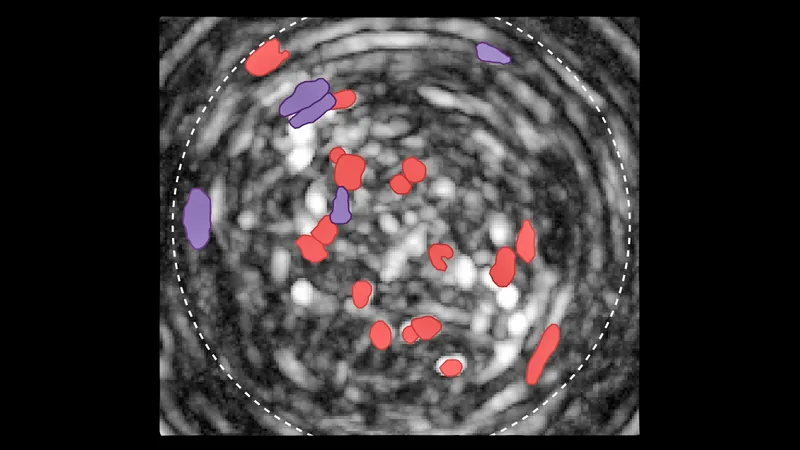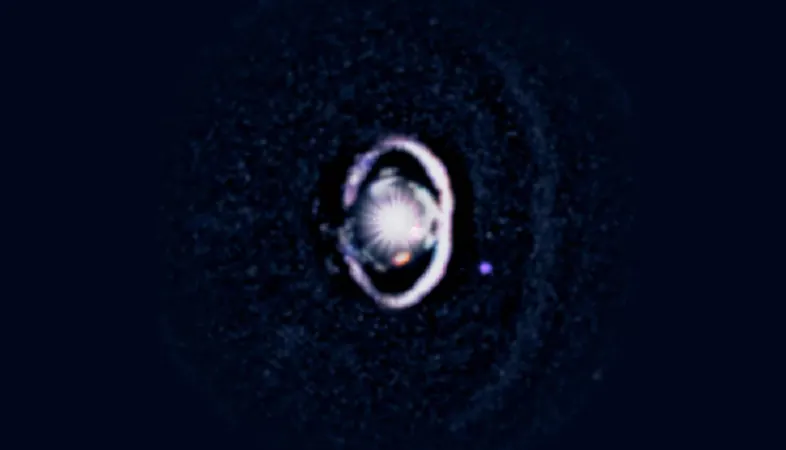
Unlocking the 'Brain Dial': Scientists Discover Key to Controlling Food Cravings
2025-09-10
Author: Ming
Revolutionary Findings from Columbia University
Craving sweets when you're tired? You're not alone! Groundbreaking research from Columbia University’s Zuckerman Institute reveals that a specific area in the brain may control not just sweetness cravings, but also desires for fats, salt, and food itself. This incredible discovery highlights a brain mechanism likened to a 'dial' that can either ramp up or dial down our eating behaviors.
A Potential Game-Changer for Eating Disorders
Detailed in a recent issue of the journal *Cell*, these findings could pave the way for innovative treatments for both overeating and undereating. With this knowledge, researchers hope to find new approaches to manage the severe appetite loss and muscle wasting that often beset chemotherapy patients.
Exploring the Brain's Hunger Center
Lead researcher Dr. Charles S. Zuker and his team investigated the brain circuits in mice that respond to sweet tastes. They zeroed in on the amygdala, the brain's emotional hub, where specific neurons get activated by sweetness. Remarkably, these neurons extended into the bed nucleus of the stria terminalis (BNST), a known player in feeding behaviors and reward responses.
Stimulating and Suppressing Appetite in Mice
When these researchers stimulated the BNST neurons, they found that even well-fed mice continued to crave sweets. Conversely, silencing the BNST led to a sharp decrease in sweet consumption, even in hungry mice. Excitingly, the team also discovered the BNST's influence extends to cravings for salt, fat, and other food types.
Understanding Internal Signals and Sensory Inputs
Co-lead author Dr. Li Wang expressed astonishment at the breadth of the BNST's role, saying their discoveries exceeded all expectations. The team uncovered essential connections between the BNST and other brain regions, illustrating its function in blending internal needs—like hunger or low salt levels—with sensory inputs.
A Lifeline for Chemotherapy Patients?
This insightful discovery may hold promise for cancer patients facing cachexia, a debilitating condition leading to significant appetite and weight loss. Remarkably, stimulating the BNST in mice treated with a chemotherapy drug helped prevent weight loss, offering hope in mitigating one of treatment's harsh side effects.
Weight Loss Drug Targeting Brain Cravings
Interestingly, the study also linked the BNST to the effectiveness of the weight-loss drug semaglutide, marketed as Ozempic and Wegovy, which targets neurons in this very region of the brain. This connection could provide valuable insights into how such medications help curb excessive eating.
A New Era in Appetite Control Research?
As our understanding of the brain’s craving mechanisms deepens, these groundbreaking discoveries may lead to novel therapies that balance our appetites, offering a lifeline to those struggling with eating disorders or the side effects of cancer treatment. The exciting journey into the brain's hunger control continues!


 Brasil (PT)
Brasil (PT)
 Canada (EN)
Canada (EN)
 Chile (ES)
Chile (ES)
 Česko (CS)
Česko (CS)
 대한민국 (KO)
대한민국 (KO)
 España (ES)
España (ES)
 France (FR)
France (FR)
 Hong Kong (EN)
Hong Kong (EN)
 Italia (IT)
Italia (IT)
 日本 (JA)
日本 (JA)
 Magyarország (HU)
Magyarország (HU)
 Norge (NO)
Norge (NO)
 Polska (PL)
Polska (PL)
 Schweiz (DE)
Schweiz (DE)
 Singapore (EN)
Singapore (EN)
 Sverige (SV)
Sverige (SV)
 Suomi (FI)
Suomi (FI)
 Türkiye (TR)
Türkiye (TR)
 الإمارات العربية المتحدة (AR)
الإمارات العربية المتحدة (AR)